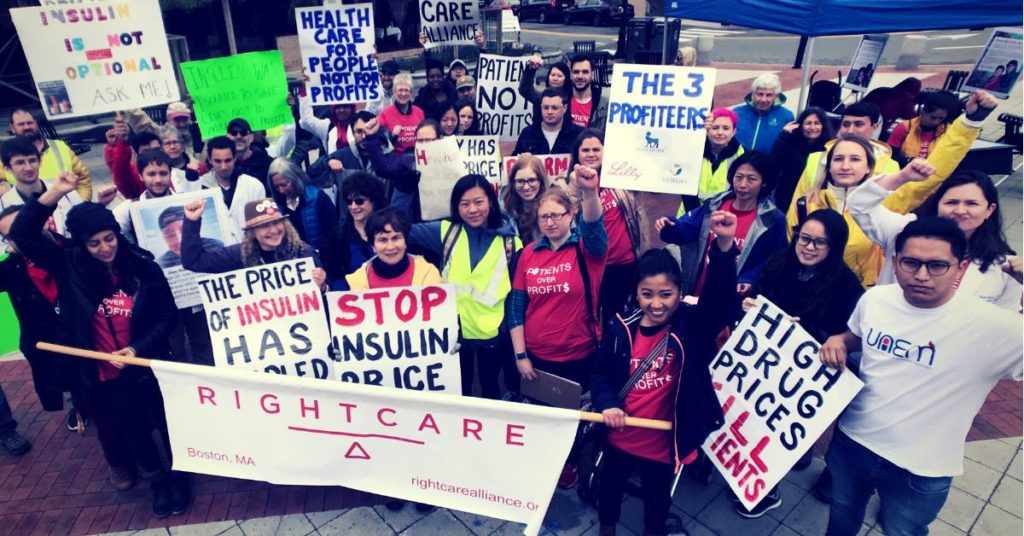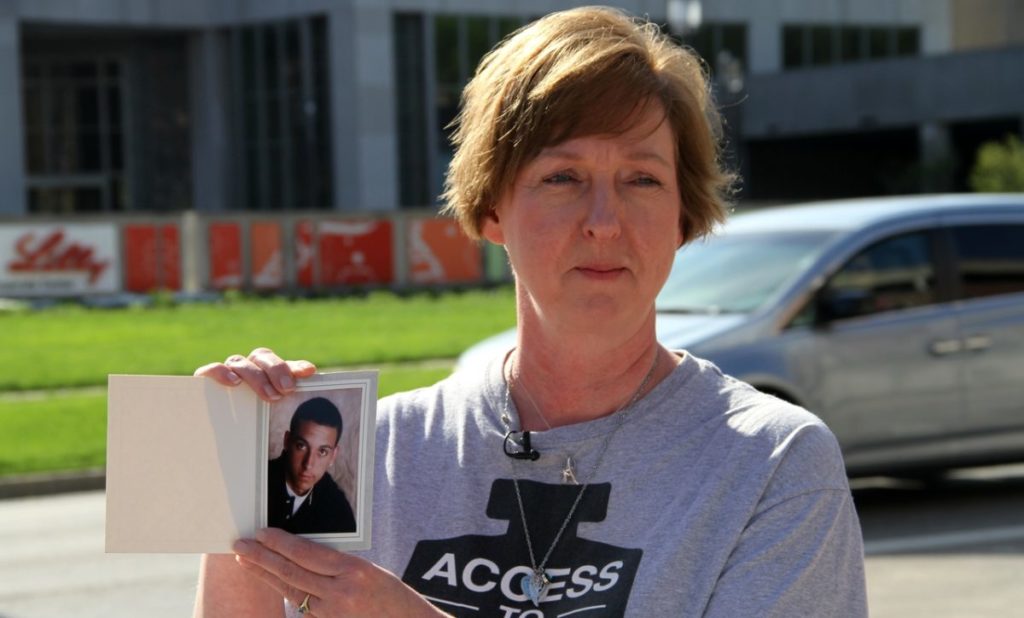
“I’ve walked out of pharmacies in tears.”
Angela Lautner’s admission is equal parts heartbreaking and common. Like roughly 34 million Americans, she has Type 1 diabetes, and has been managing hers for more than 20 years. And like 7.4 million other diabetics, she needs insulin to survive. But insufficient health insurance coverage options often make affording insulin difficult, if not impossible, for her and many others. And “the cost without insurance is not attainable,” she says.
That plight – and the residual fear and frustration Lautner’s anecdote spotlights – is shared by many people with diabetes. And needlessly so, health advocates say.
Last year marked the 100-year anniversary of the discovery of insulin, which almost magically changed a diabetes diagnosis from a death sentence into something far more manageable. At the time, the scientists who discovered insulin refused to profit from the discovery, and instead sold the patent for just $1 in a bid to make it accessible for all, according to the World Health Organization.
But that’s not how history unfolded. Today, patients pay thousands of dollars per year, sometimes even per month, for insulin– or they quite literally die trying. An army of activists, with women like Lautner at the forefront, is doing all it can to change the status quo.
Lautner is the Kentucky #Insulin4All chapter legislative lead for T1International, a global nonprofit working on insulin accessibility both in the United States and abroad. She operates at a state level to raise awareness around the deadly repercussions of insulin costs, and encourages legislative solutions to pharmaceutical price gouging.
The organization has 40 chapters in 40 states, each attempting to chip away at this global problem through local actions. Founder Elizabeth Pfiester, who also has Type 1 diabetes, says “we have made strides, but every day, I hear more stories of people in the U.S. and around the world who can’t afford to live. It’s completely unjust.”
It’s those stories that fuel activists – and serve as a critical component of the work they do. Getting people to understand the humanity behind the statistics is crucial to making change happen, they argue.
As Pfiester puts it, “Health is a human right, so access to insulin is a human right.”
A Deadly Quagmire
Today, three pharmaceutical giants – Eli Lilly, Sanofi and Novo Nordisk – manufacture basically all of America’s insulin. “There is [a] virtual monopoly on insulin that has been sustained for decades,” according to the Mayo Clinic’s online journal, allowing for bloated list prices for insulin that have risen significantly over time, especially over the past decade. And so-called “evergreening” patents prevent the production of generic insulin.
To put it in dollars and cents – insulin presently costs, on average, about $175 to $300 per vial to purchase (but only about $4 to $6 to produce), with patients needing at least two or three vials per month. And that’s just insulin itself – additional supplies like glucose monitors and test trips can cost a patient an additional $1,300 per month. Individuals are often forced to invest thousands on medically necessary materials – if they can even afford to do so.
A 2021 U.S. Senate report took those three pharmaceutical companies to task for “aggressively rais[ing] the [price] of their insulin products absent significant advances in the efficacy of the drugs.” Eli Lilly subsequently offered a slightly lower-priced option, while Sanofi pointed to its savings program. And Novo Nordisk detailed its pricing policies on its website.
Lilly told The Story Exchange that it supports broader reform and public policies such as copay caps. “Lilly is firmly committed to ensuring affordable insulin is available to anyone who needs it,” the company said, pointing patients to a website it maintains, insulinaffordability.com. Novo Nordisk noted its own affordability programs at novocare.com, adding “we know that everyone’s situation is different and people need options.” Sanofi, meanwhile, said that “despite rhetoric about skyrocketing insulin prices,” the net price of insulin has been steadily falling, “making our insulins significantly less expensive for insurance companies.”
Still, for those with insurance, out-of-pocket deductibles average at about $4,400 a year for individuals, and $8,400 for families. In some cases, insulin rebates are available, but the process of obtaining them can be daunting and lengthy, patients note. And America’s uninsured – just shy of 9 percent of the nation – don’t even have that net beneath them. Those individuals who need insulin, many of whom fall into that coverage gap because they don’t have full-time jobs, are forced to take several-hundred-dollar list-price hits.
Worse still, diabetes is disproportionately prevalent among lower-income people – the majority of them, people of color.
To further compound the issue, there are also discrepancies between the kinds of insulin, and the tools used to administer it, that providers will cover for policyholders, notes Deidre Waxman of the Right Care Alliance, a collaborative of clinicians, patients and concerned citizens. In an attempt to minimize the cost, about a quarter of diabetes patients in the U.S. report rationing whatever insulin they can get their hands on – a solution that often has its own devastating repercussions, ranging from limb loss and blindness to kidney failure and death.
Like Lautner, Waxman knows firsthand how hard it can be to access insulin. Her story starts with a Type 1 diabetes diagnosis at age 60 that she had to fight for – which matters for both treatment and insurance purposes – and has involved various types of private and public insurance, as well as insulin obtained by borrowing from friends or bringing it in from Canada.
It’s a manifestation of the adage that desperate times call for desperate measures. “When you can’t get your insulin … I don’t know how to describe it,” Waxman says. “At times, it’s so down-to-the-wire, and it leads to panic.”
Personalizing the Problem

New diagnoses of both Type 1 and Type 2 have risen steadily and significantly since 2008 – as of 2019, diabetes was the seventh leading cause of death in the U.S. About 96 million more Americans are considered prediabetic.
The Covid-19 pandemic has added new urgency. First, individuals with diabetes who contract it are far more likely to suffer from severe symptoms of the virus, in addition to possibly seeing diabetes symptoms worsen. But also, newer research points to an increased risk of a diabetes diagnosis for children under the age of 18 as soon as one month after a Covid-19 infection.
The numbers can get overwhelming, which is why amplifying individual stories is a key part of the solution, activists say.
Take Nicole Smith-Holt, who lived every parent’s worst nightmare when her son, Alec, died in June 2017 of diabetic ketoacidosis. He was forced to ration insulin after he lost access to her health insurance coverage on his 26th birthday – the cut-off age in America for receiving coverage under parents’ plans – then lost his life shortly after. Smith-Holt told Alec’s story during a protest at Eli Lilly headquarters after his passing, before embarking upon a media blitz in 2018.
In 2020, the Alec Smith Emergency Insulin Act, which allows eligible individuals to receive a 30-day supply of insulin for just $35, was signed into law in Minnesota.
Lautner has taken the lead on similar efforts in Kentucky, where she played a key part in the passage of Kevin’s Law – named for Kevin Houdeshell, who died because he didn’t get the emergency insulin he needed. Thanks to that bill, “we can get an emergency insulin refill if our prescription has expired,” Lautner says. Its sponsor, State Rep. Danny Bentley, said that hearing about Houdeshell’s death galvanized him into action.
Other governing bodies have taken some action in recent years, too – for example, Colorado set copay caps of $100 for insulin that take effect this year. Illinois, Maine, New Mexico and four other states followed suit with similar caps. President Joe Biden has also called for federal $35 copay caps – though, as critics note, such plans still leave out the uninsured.
Waxman of the Right Care Alliance says that more of this sort of action is needed. But she’s worried it won’t come to be, as “legislators don’t advocate seriously or strongly for us. And they’re not going to as long as there’s huge money” from pharmaceutical companies to sway individual interests, she adds. She’s not wrong – over two-thirds of Congress members have cashed campaign checks from Big Pharma, research shows.
All the same, Pfiester and T1International are especially focused on regulations for those pharmaceutical companies, namely in the form of federal-level price caps. “They set list prices,” Pfiester points out. “They could change that tomorrow and make it more affordable. And they need to be held accountable.”
Pfiester adds, “This is change that is needed – people are literally losing their lives.” ◼️



